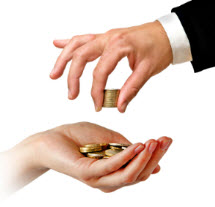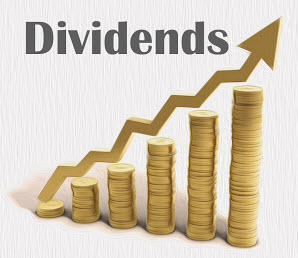Dividends are paid out by a company’s board of directors to their shareholders. The dividends are a proportion of the company’s income, and how much is paid out depends on how well the company has done over the last year or so. They can be paid out as a straightforward cash payment, as stocks in the company, or on occasion, as property.
Different Types of Dividends
Cash dividend
 This is the most common dividend paid out to stakeholders. It is often paid through shares. For the company to pay out this type of dividend, they need to have enough cash reserves to be able to pay out everyone.
This is the most common dividend paid out to stakeholders. It is often paid through shares. For the company to pay out this type of dividend, they need to have enough cash reserves to be able to pay out everyone.
Bonus share
Bonus shares are issued by a company when they don’t have much of a cash flow, but they want to keep investors on their side. They are also known as stock dividends. These are issued – as the name suggests – as bonus shares. How many a stakeholder gets depends on how many shares they have in the first place.
Share repurchase
This is when a company decides to buy back their own shares. In effect, it’s a dividend alternative because cash is ultimately returned to the investors, just through other means.
Property dividend
This is where a company makes the payment of a dividend through something related to property that the company holds – it could be equipment, a vehicle or inventory. This will be at market value.
Scrip dividend
This type of dividend occurs when a company doesn’t have enough cash to pay dividends to their shareholders at the present time. Therefore, it’s a promise that they will pay them later.
Liquidating dividend
This is not a good sign if this happens! This is seen as a sign of liquidation, as it means any money invested by the shareholders is returned to them.
Advantages of Paying Dividends
Being stable
If a company has a history of paying dividends on time and regularly then this reflects well on the company. It will also make them more attractive to investors as it shows that the company is likely to be a good investment because operations are expected to be stable in the foreseeable future.
The ‘Bird in the Hand Fallacy’ theory
This is the theory that shareholders prefer the stability of dividends instead of the risk of potential capital gains in the future.
Disadvantages of Dividends
Clientele effect
How regularly a company pays dividends may work in a positive way, but also in a negative way for a company. If a company can’t pay out dividends regularly, it may mean investors pulling out and selling off their stock.
Decreased retained earnings
This can be a problem for a company when it pays out dividends to shareholders. Unexpected overheads and costs can rise if the company doesn’t have enough cash flow to pay their bills.
Limiting the company’s growth
Paying out dividends limits the amount of cash that the company has to work with. This may therefore also limit the company’s growth, as they will have less money to invest.
This article was last updated on: January 16, 2018









